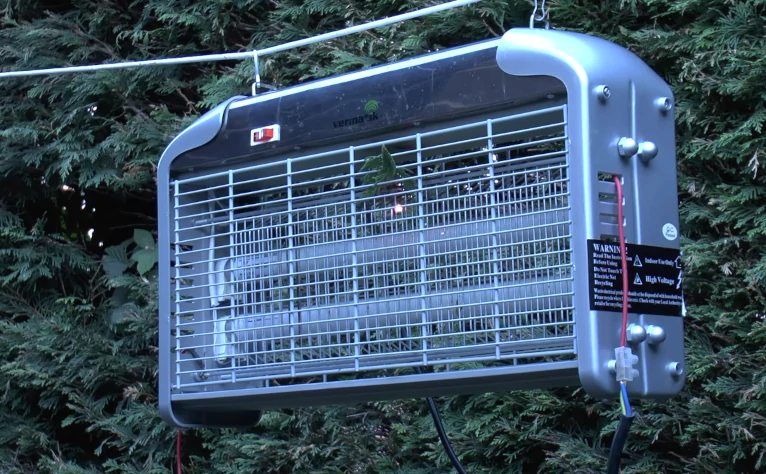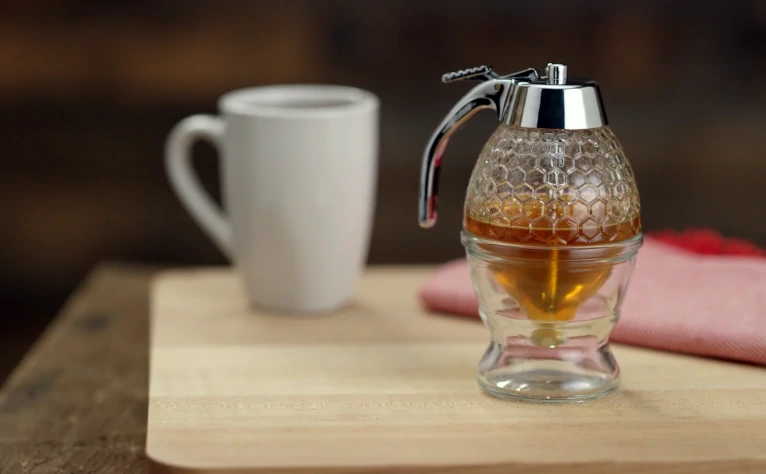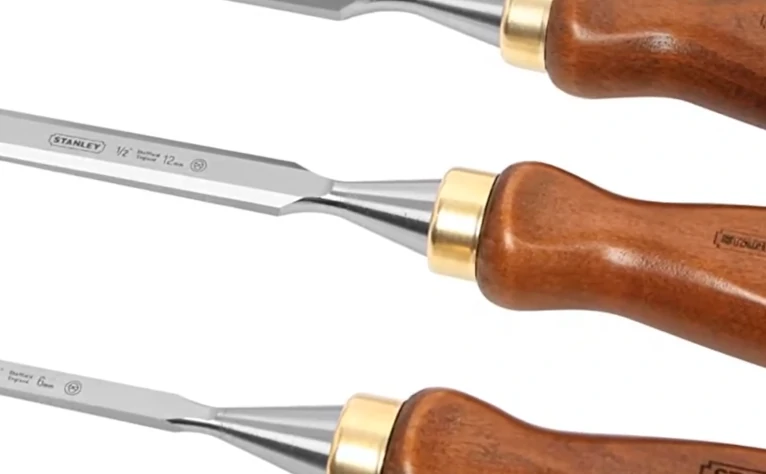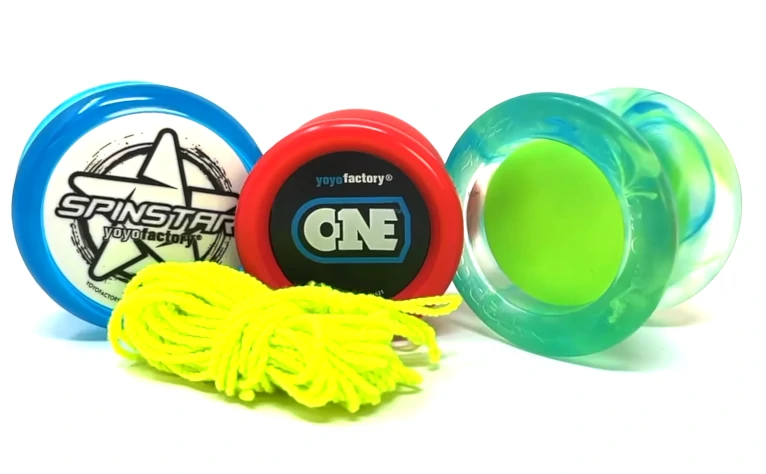Stroller Safety Tips For Parents

Infants and young children are susceptible to injuries due to accidents and unsafe objects. Being fully informed with the safety measures is very significant in order to prevent potential risks regarding health and wellness. In a very early age, infants and children tend to be more curious about the outside world, leading them to explore whatever catches their attention. Having this point in mind, knowing the stroller safety features and tips is an absolute must when choosing the right stroller for you and for your young one. Be fully attentive with your young one not to be involved in a horrifying situation that can affect his/her health and wellness.
What Stroller Type is Safe For Newborns
There are strollers that are manufactured for the use of a newborn. Whatever stroller brand you choose for your newborn, be sure that it has a reclining seat that can position to a full flat back, since newborns have weak neck support and cannot lift their heads up. A bassinet or an infant car seat can be used instead of a reclining seat.
Lightweight or umbrella strollers and jogging strollers are not recommended for newborns because most of them do not offer a full reclining seat, and the seats are not padded enough for head and back support. These types of strollers are not appropriate for babies until six months of age.
Safety Tips For a Travel System
If you travel frequently, you tend to buy a travel system for your baby so that you can have a car seat and a stroller all-in-one. This type of stroller gives you the convenience to move your baby between the stroller and the car, once your baby is strapped onto the car seat. You can also bring the car seat in planes if you plan to take your baby along with you. The travel system stroller is a great deal of a travel buddy. Just remember that taking the travel system with the car seat means being extra cautious in using it for your baby.
The car seat is very portable to use when your baby is napping. You don’t have to wake your baby up just to get on to the stroller or to any places. Carrying the car seat without waking the baby is totally flexible. Be certain that you don’t drop the car seat with your baby on it. You don’t want your baby to suddenly wake and cry, or to have any head trauma. It is built to protect your baby during travels, and not to replace the crib at home.
Never forget to buckle your baby tightly into the car seat. Sleeping in long hours inside the car is not suitable for sleeping babies because there is a possibility of developing a flat spot at the back of your baby’s head, and a formation of gastroesophageal reflux disease, which is a chronic digestive disease.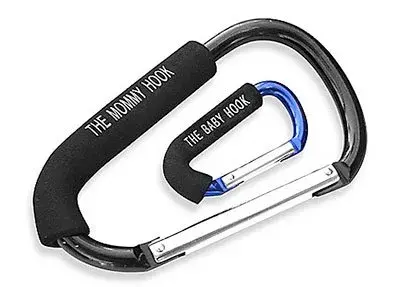
Studies have shown that letting your newborn sit in an upright position may compress his/her chest, resulting to the blockage of oxygen in the newborn’s blood system. Such position can impair the developmental stage of the child.
If your car has airbags, avoid putting the infant rear-facing car seat in the front seat of the vehicle because when the air bag inflates, it may hit the head of the baby that can cause serious head injury. Children younger than 13 years old, most especially newborns and infants, should always be at the back seat, which is the safest place in the vehicle.
The best method in using the car seat for infants and toddlers is to have the car seat rear-facing until two years of age. This is because infants and toddlers are vulnerable to head and spinal cord injuries due to their developing bones and ligaments. Their heads are proportionately bigger than their necks and their neck support system is still not stable compared to older children. A rear-facing car seat provides the full, best support to your child’s head, neck and spine, and it prevents your child to feel the sudden impact or force from stopping the vehicle or from any car crash.
Be sure that the car seat is tightly fastened with the car’s buckle system in order to have the car seat stable when the vehicle is moving. Harness straps should also fit comfortably and firmly against your child’s body to prevent from falling over to the side. If in doubt with the strapping or buckling method of the car seat, read the instruction to further know the details.
Make no doubt that the car seat is tightly fastened with the car’s buckle system in order to have the car seat stable when the vehicle is moving. Harness straps should also fit comfortably and firmly against your child’s body to prevent from falling over to the side. If dubious with the strapping or buckling method of the car seat, read the instruction to further know the details.
A child’s head can wrench forward in a head-on collision, leading to spinal injury. That is why do not let your child face forward too soon. Wait until your child is three years and older or until your child has strong neck support system.
When the car seat is in rear-facing position, have the car seat reclined according to the instruction manual in order for the child to be safely snuggled in the car seat, and to prevent any force from jerking the child’s head.
If you have two kids, never let them share one seat belt. It is never advisable to do so because when two kids are buckled with one seat belt, there is a tendency for them to bang their heads together with a fatal force. It is a good thing that a car seat is designed for one passenger only. If you have twins, never let them sit together in a car seat. Both of them can not fit in a car seat. Purchase two separate car seats for your twins.
Stroller Safety Features
 Consider the following features necessary in maintaining stroller safety:
Consider the following features necessary in maintaining stroller safety:
- Brakes. The brakes are utilized to stop the stroller from moving on a steep incline. Choose a stroller with brakes that are within reach and are convenient to operate. Most strollers have breaks on the back wheels so that parents can just pull and push them using their foot. Some strollers, specifically jogger strollers and some standard stroller, have hand brakes on the side. See to it that your baby is not able to reach for the handbrake. When parking the stroller, engage the brakes on the two wheels to provide extra measure of safety.
Consider the easiness of pushing and pulling the brakes on the back wheels. When you test the brakes to be very hard to push and pull by foot, try to look for another stroller. You don’t need to hurt yourself when using the stroller’s safety mechanism. The important thing is that you are able to put on the brakes at a fast pace in case something unexpected happen. Good and functional brakes promote stroller safety.
- Tether strap. A tether strap is a leash that is wrapped around your wrist while you stroll or jog. When you fall or trip over, the stroller stays beside you. It does not roll on its own when you happen to fall and push it accidentally. Most jogger strollers have tether straps.
- Fastening/buckling system. The buckling system is used to keep the baby tightly secured and intact in the stroller, and it is for preventing the baby to slip out and move forward in a sudden impact. The buckling system should have a durable safety belt, harness and crotch strap. Most strollers have straps and belt made of thick nylon webbing. Look for strollers with buckles and belts that can be operated easily for quick fastening.
Do a necessary inspection if the models are sturdy and strong that do not hurt the baby in any way. Some strollers have waist and crotch straps with adjustable five-point padded harness. The straps must accommodate a variety of height and can be made adjusted to fit the size of the baby.
- Wide base. Strollers with wide bases have less potential to tipping over, and they can balance well on uneven pavements. A well-balanced stroller also promotes stroller safety.
- Wheels. The wheels are the most important component of a stroller because they do the literal moving. Good wheels mean stroller safety. The larger the wheels, the more flexible it is in pushing on rough terrains and steep turns. However, large wheels take up space in the trunk when folded, that is why some manufacturers advise to remove the wheels when placed in car trunks. Most strollers have double wheels in the front to make steering very manageable. The front wheels have two positions — full swivel for smooth pavements, and locked swivel facing forward for bumpy terrains. Some strollers have front wheels that do not swivel at all, which leads maneuvering very hard.
Choose a stroller with wheels that are tightly compact, not with those misaligned and loose wheels, which can be very dangerous when they rolled out of the stroller. Ensure that the wheels are on the floor uniformly.
- Canopy. A canopy is a cover or a shield that is used for protection against harmful sunrays and rain. Most canopies have built-in SPF feature to prevent glaring and sunburn. Some canopies are made of simple fabric, large enough to cover the entire front of the stroller. Some can be reversible at 180 degrees. Most canopies have a mesh peek-a-boo window that allows the parents to peek through and check on the baby while strolling. This is a favorable stroller safety against the heat and inclement weather.
- Leg holes. Strollers with fully reclined seats must have leg holes so that the baby cannot slide through the base of the stroller. Shields that are made of mesh or fabric are also present to raise and cover the leg holes when not needed. A stroller with leg holes that are not close enough with the baby must have its seat not fully reclined to prevent its application with a newborn.
- Stroller safety light. The stroller safety light is attached on the stroller to be used when walking at night time. This light emits bright eye-catching light to alert road users of the child’s presence. Parents do not need to worry about vehicles, runners and even cyclists that pass by, since the light is there to have them aware that a child is being strolled on the road. This feature is optional since it is only useful at night time.
Your browser does not support the video element. Kindly update it to latest version.
Most commons injuries
Accidents usually happen but being cautious is still the best to promote awareness in situations and things that can potentially harm your young ones.
- Fingers can be entrapped in folding the strollers when parents are not being attentive to stay their young ones away.
- Fingers can be crush or cut, and even amputated with the stroller’s strong and tight folding mechanism.
- Bruises and facial injuries are attained with newborns and older babies when associated with falls and tip overs from strollers.
- Strollers roll over the field or down the road when brakes are not engaged, thus causing them to crash, to fall or to tip over.
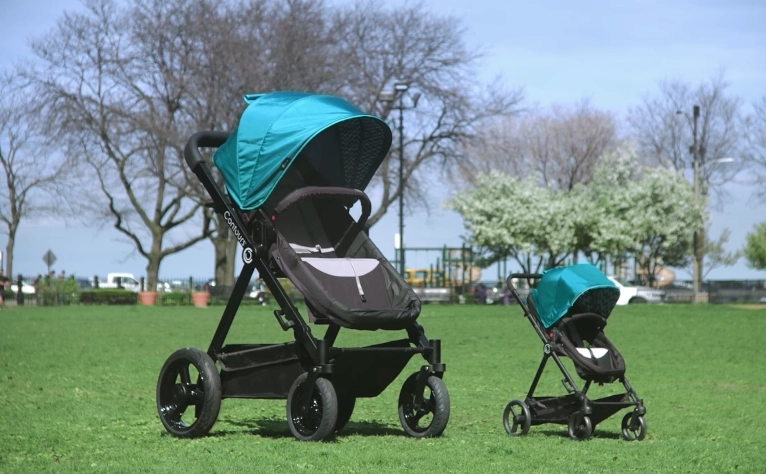
Stroller Safety Tips
Below are encouraging tips that aim to gain awareness and information to parents with stroller safety and child protection. Ignorance is never an excuse when dealing with strollers that have the capability to cause injuries and potential health risks with babies and kids when not properly accommodated.
- Before you begin walking or strolling elsewhere, check your baby if he/she is properly secured in the harness and belt straps. Also check if the components or attachments of the stroller locked safely in their proper position.
- Purchase a stroller that adheres to the requirements of the mandatory standard.
- Never let your baby sleep in long hours in the stroller as suffocation or strangulation may occur if the baby moves around. For instance, when the baby turns, the harness may twirl around the neck.
- Do not hang too much bags on the handlebars because there is a chance that the stroller may lose its balance and tip over due to the heavy load it is carrying. Store your things properly. Hand carry your bags when the storage basket is already. The things of your baby such as diaper bag, bottles and extra clothes are a priority to be contained in the basket. A stroller is not engineered to carry extra weight such as grocery bags or shopping bags. However, there are some strollers that are designed to handle overloaded things, and others are not. Read the stroller’s manual first to be confident with the capacity of the stroller.
- When folding and unfolding the stroller, assure that your child is out of the way, most especially when your child is very curious with the folding and unfolding process. When very curious, fingers may get crushed or stuck in the frame, or even amputated due to the force. Secure the folding lock when the stroller is in folding position. There are parts of the stroller that can pinch your child’s finger to the point of amputating it. When unfolding, inspect the stroller if it is in proper position and compact look. You don’t want the stroller to suddenly snap when your child is on it.
- Keep your baby attended in the stroller. Never leave your baby inside even in just seconds. Unexpected things always happen. Habitually keep an eye on your baby and the stroller.
- Inspect the stroller if it has rough edges and sharp objects. Your baby may cut him/herself without him/her knowing about it. Be aware that any child that young does not know anything about the surroundings.
- When browsing for the right stroller, always test for its stability, easiness of use, maneuverability, and safety measures.
- Always take time to read the manufacturer’s instruction manual for additional information about the stroller and its features and included attachments like car seat, canopy, etc.
- Most tether straps are included in jogger strollers, and you can purchase a separate one when you buy other types of stroller. Take advantage of the tether strap so that the stroller does not roll on its own when you happen to trip over and accidentally push the stroller. Keep the tether strap to maintain control of the stroller.
- Always apply the brake when you park the stroller with your baby inside it. Be cautious of the surrounding when parking the stroller. Be certain that the stroller does not roll towards any dangerous area such as railroad, steep hill, or park with lake. The brake is also advantageous when you want to stop the stroller from moving too fast when steering can be uncontrollable such as going down a steep road.
- Check the wheels or the tires if they are still in good condition. There should be no punctures when you go out strolling because punctures may affect the wheels and the stroller’s maneuverability.
- Be careful with the toys that you attach on the stroller. When you hang the toys, see to it that the toys are tightly fastened as not to fall on to the baby’s head.
- Always buckle your baby so that they can enjoy leaning over in his/her seat. A seat belt is also convenient to prevent your baby from falling out of the stroller. The seat belt is also helpful when the baby is getting a nap to keep the baby from moving around too much in the stroller. The seat belt also secures your baby from reaching on to the ground when the stroller tips over.
- When you park the stroller, check if the ground is flat. Don’t settle the stroller in an uneven ground as it may lead to tipping over. A slight slant on the surface can lead to rolling away.
- When choosing a stroller, consider the easiness of grip with the brakes. You don’t want to have an unreachable brake when you need it the most. It needs to be close to you whether the brakes are operated by hand or by foot.
- Don’t always rely on the stroller brakes entirely. It is rather contradicting with the previous tip to always engage the brakes when moving too fast or parking. Don’t trust the brakes in very risky situations when you steer in steep inclines because there is a possibility that the brakes may not hold on to the friction. The brakes may even fail and break due to the high force, no matter how durable they are when tested and reviewed. The parents should always be in control in maneuvering the stroller.
- Use the canopy if the weather is hot or inclement. Avoid your baby to stay under the sun for too long as it can cause sunburn. A baby’s skin is very delicate and sensitive; it causes the skin to be painfully red. Also, don’t let your baby get wet from the rain since your baby can easily catch colds.
- If you leave the stroller under the sun, check for the surface temperature before putting your baby in the stroller, as it can burn the skin of the baby. During hot weather, avoid letting your baby sit or lie on the stroller for long hours because the excessive heat can cause the metal pieces and plastic components to smell and to heat up.
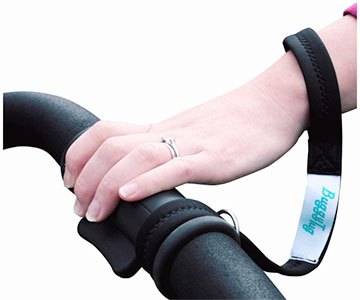
- Know the weight capacity of the stroller if it is able to carry the weight of your baby in the long run. Some strollers are built to adhere with heavy babies, while others can only accommodate infants up to six months of age. All strollers have their own minimum and maximum weight capacity. Be sure to read the instruction manual first to know more about the stroller.
- Avoid taking the stairs with the stroller. Even if both parents are able to carry the stroller together, there is still uncertainty that the stroller remains safe while going up or down the stairs. There is always a risk of falling down the stairs. Escalators also deliver additional hazard as there are moving mechanical parts. Use the elevator, instead. Just secure the stroller inside the elevator, leaving nothing behind when the door closes. If there is no other alternative, take the baby out of the stroller, and hand carry the stroller or have others to help you carry the stroller.
- Don’t run or jog unless the stroller is a jogging type. All strollers are manufactured with specific lifestyles and targets. If your stroller is meant only for strolls like the standard strollers, lightweight or umbrella strollers, and sided-by-side strollers, then these strollers are really limited to strolls only. They do not have the ability to withstand the running requirement of a jogger stroller. Don’t be confused with the product label like the “Baby Jogger” as it is not designed for jogging. Read the manual to check its capacity. Research on the model so that you know if it is made for running. If you try to run with non-jogger strollers, the odds that your baby may receive a sudden impact on his/her head causing head injuries. Bumps and shocks encountered in jogging do not actually bother the parents, but these can drastically affect the health of a developing baby, most especially a newborn.
- Avoid putting hot coffee or tea in the cup holder as there is a chance that it may spill on to the baby’s head and body. Hot beverages are not really entitled to be placed in the cup holders because the holder is usually shallow.
- Inspect the stroller from time to time in order to prevent broken parts from harming your young ones.
- Practice makes perfect. If you are still new to managing the stroller, take your time to familiarize yourself with the features that the stroller has. Read the manual and try to practice the stroller without having baby in it.
Conclusion
Having a child safe is of the utmost importance because a child is very fragile and prone to injuries ranging from minimal to fatal. A child is still on his/her growing peak and developing stage, so curiosity is already part of his/her nature. And because of this nature that parents must understand that guidance, awareness and attentiveness are very essential in keeping the child safe to a priority.
You can buy as many strollers as you want, but a child’s life is, without question, irreplaceable. Always be cautious and informative with the surroundings, with the type of stroller you have, and with the actions you are taking. Every tip counts for stroller safety.
Taking time to read the instruction manual is the most important thing to do when owning a stroller, most especially with parents who are just new to the strolling hype. Every stroller has its own special features and advantages over the others. It is best to check on the manual to know its capacity, its limits, and its benefits for you and for the baby. Informed parents are always aware and preventive for stroller safety.
Infants and young children are susceptible to injuries due to accidents and unsafe objects. Being fully informed with the safety measures is very significant in order to prevent potential risks regarding health and wellness. In a very early age, infants and children tend to be more curious about the outside world, leading them to explore whatever catches their attention. Having this point in mind, knowing the stroller safety features and tips is an absolute must when choosing the right stroller for you and for your young one. Be fully attentive with your young one not to be involved in a horrifying situation that can affect his/her health and wellness.

